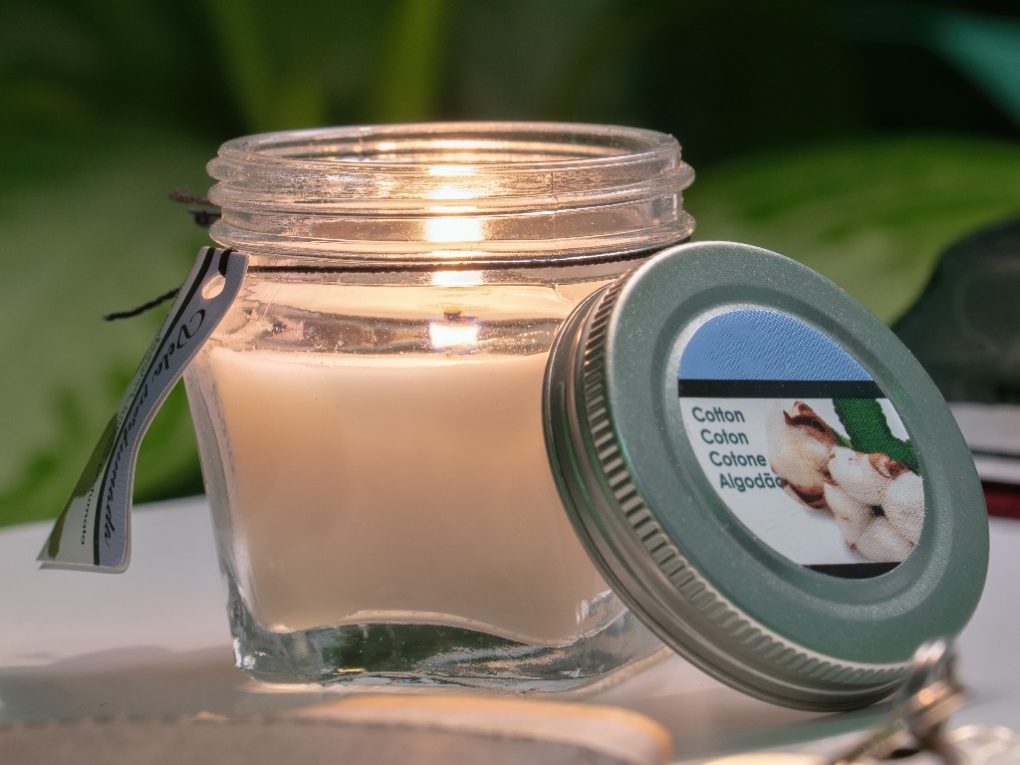For soy candles, the top wick choices include cotton, wood, and paper core wicks. Selecting the right wick involves considering several key factors. These include the wax type, the diameter of the candle container, and the desired burn time. The wick’s material and construction also considerably affect the candle’s performance.
With numerous options, finding the perfect wick for your soy candle can be tricky. We’ll explore the best wick types for soy candles, highlighting their features and guiding you in selecting the ideal one for your project. Whether you’re an experienced candle maker or just starting, this guide will empower you to create premium soy candles that burn evenly and release a captivating scent.
Types of Wicks
Cotton Wicks
Cotton wicks are the most popular choice for soy candles. They consist of braided cotton fibers and come in various thicknesses. These wicks are user-friendly and suitable for different container types. They are also cost-effective and widely accessible. Cotton wicks are available in flat braided, square braided, and twisted designs.
Flat braided cotton wicks are a favourite for soy candles. They offer ease of use and a consistent burn. Square braided cotton wicks are thicker, producing a larger flame. Twisted cotton wicks are the thinnest, resulting in a smaller flame.
Wooden Wicks
Wooden wicks are gaining popularity in soy candles. Crafted from wood, they come in various sizes and shapes. These wicks create a distinctive crackling sound as they burn, enhancing the candle’s ambiance.

Wooden wicks produce a larger flame than cotton wicks, making them suitable for larger containers. However,they require more maintenance,needing frequent trimming and perhaps a larger wax pool for optimal burning.
Paper Core Wicks
According to Northstar Country Candle Co, paper core wicks blend cotton and paper fibers for a consistent burn and reduced soot production.
Paper core wicks are available in various sizes and generate a larger flame than cotton wicks. They are easy to use and work well in different container types. These wicks are a great option for those seeking a clean burn without the upkeep of wooden wicks.
Factors to Consider
When selecting the best wick for soy candles, consider these factors to ensure an even and clean burn:
Candle Size
The candle’s size significantly influences the ideal wick choice. larger candles need thicker wicks for even wax melting and a stable flame. Smaller candles require thinner wicks to prevent excessive heat and rapid burning. Choosing a wick that matches the candle’s size is crucial for optimal results.
Fragrance Load
Adding fragrance to your soy candle requires considering its impact on the wick.Fragrances can affect the candle’s burn, and some scents may need a larger wick for even burning. Testing with different fragrance loads is essential to find the right wick size for your specific scent.
Wax Type
The wax type also determines the best wick for your soy candle. Soy wax, being softer than other waxes, needs a wick that creates a larger melt pool for even burning. Cotton wicks are a popular choice for soy candles due to their availability and clean burn. Hemp wicks can also work well, providing a hotter burn and longer-lasting performance.

Testing and Troubleshooting
Burn Testing
Before selling or gifting soy candles,conduct burn tests to ensure the wick is suitable for the size and shape. This prevents uneven burning or tunneling. Follow these steps for a burn test:
- Trim the wick to ¼ inch with sharp scissors and light the candle.
- Observe the burn for the first hour. The flame should be stable without excessive flickering.
- Check the melt pool size. It should reach the container’s edge within 2-4 hours.
- Observe the candle for the next 3-4 hours. The flame should remain stable and not grow too large.
- Record observations and adjust the wick size if needed.
mushrooming
Mushrooming occurs when the wick burns, creating a carbon buildup resembling a mushroom at the top. This leads to excessive soot and poor performance. Prevent mushrooming by choosing a wick appropriate for the candle’s size and shape, and avoid over-wicking. If mushrooming occurs, trim the wick to ¼ inch and remove any carbon buildup before relighting.

Soot
Soot is a black residue that accumulates on the container, wick, and surrounding areas during burning. To prevent soot, choose a wick suitable for the candle’s size and shape, and avoid over-wicking. Keep the candle away from drafts and trim the wick to ¼ inch before each use. If soot appears, extinguish the candle, let it cool, and wipe away the residue with a damp cloth.
